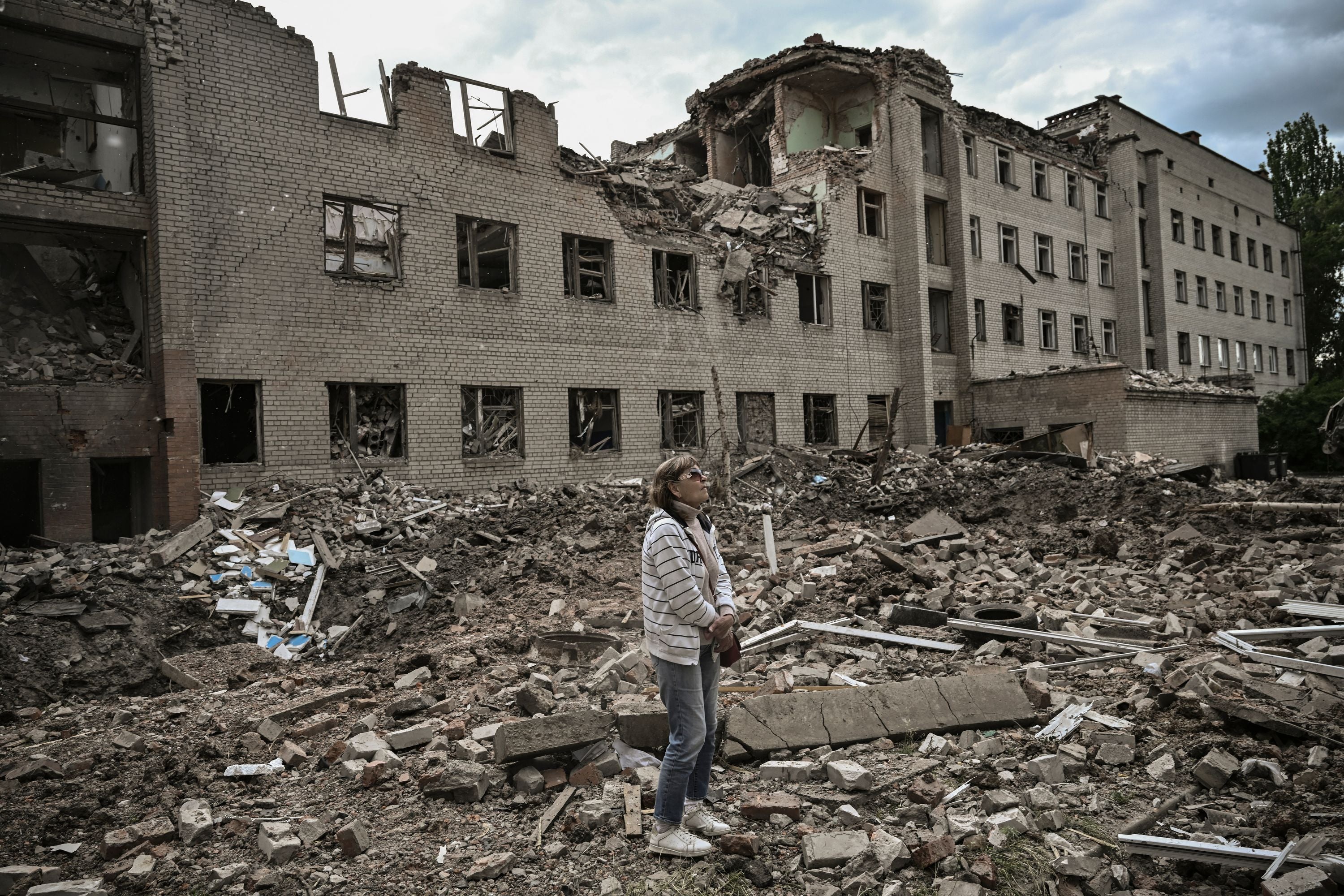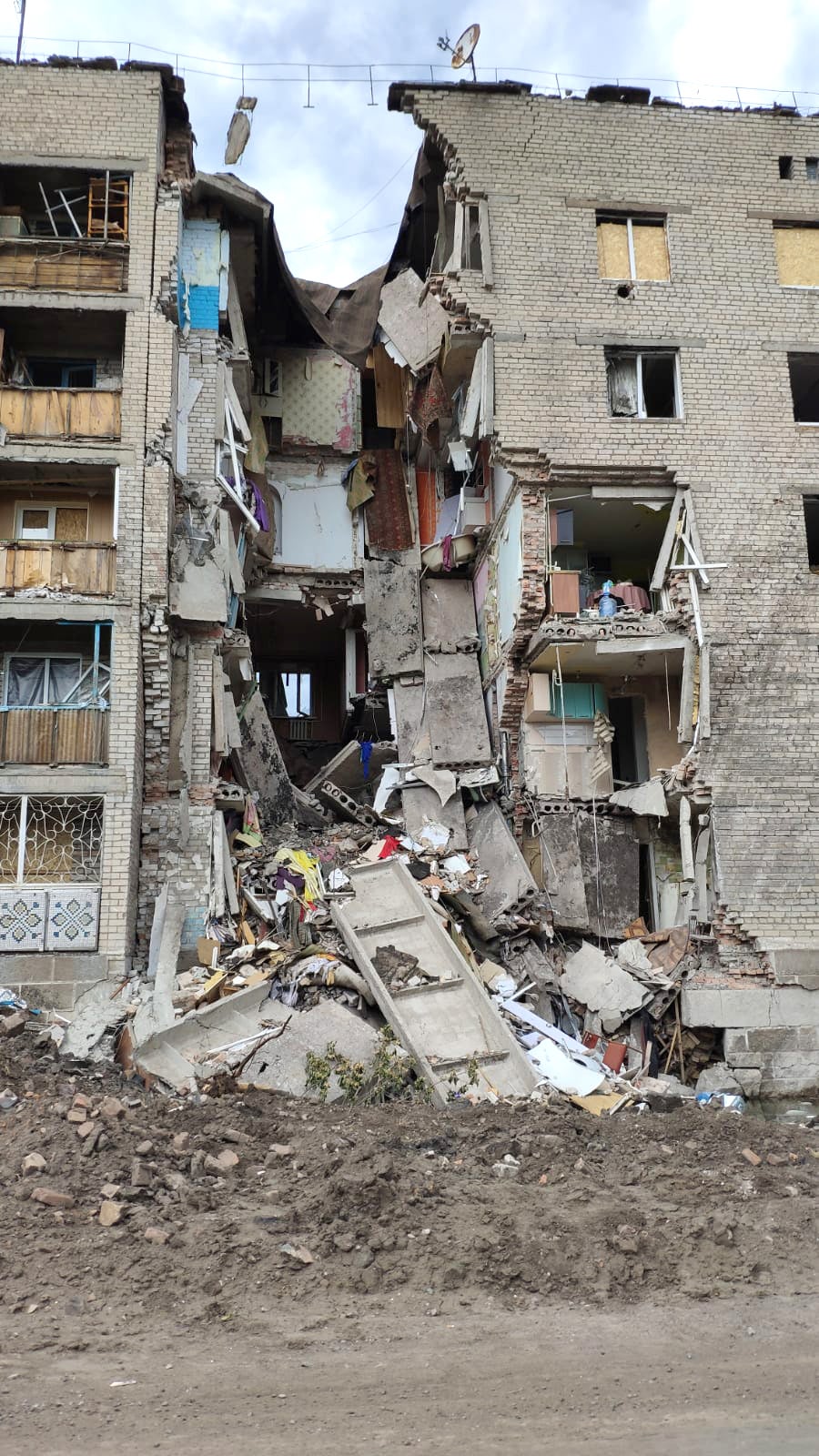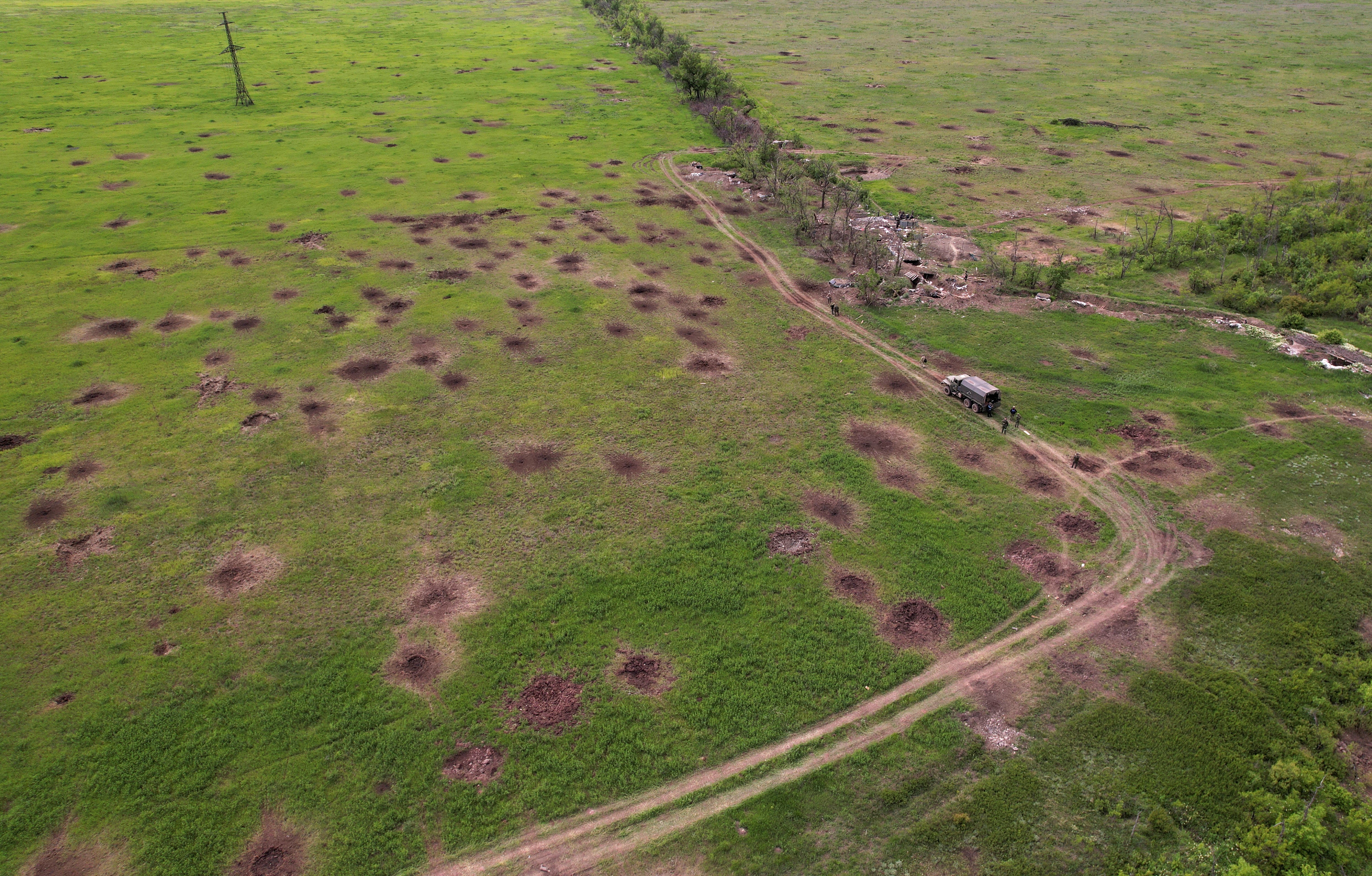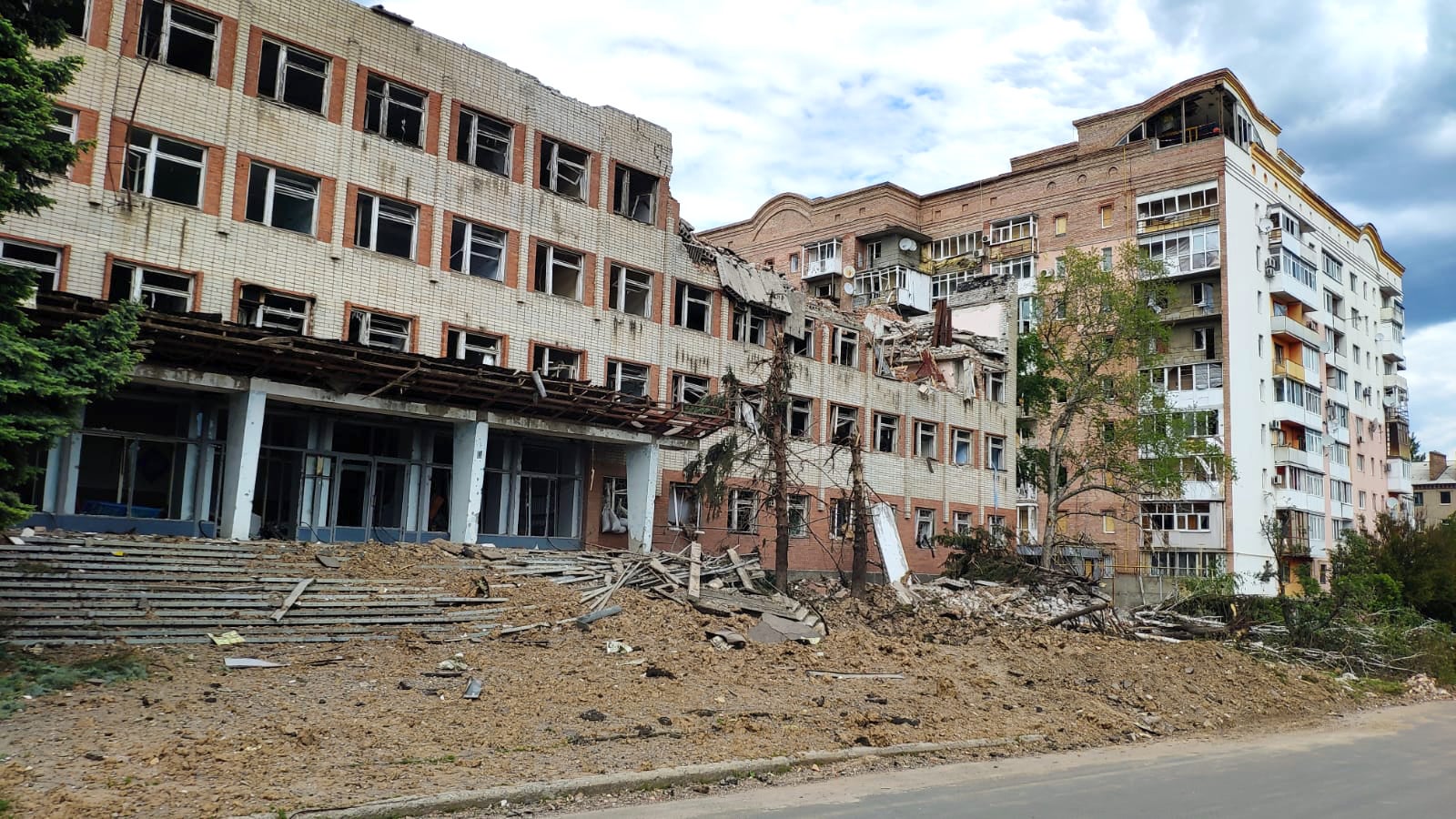‘This is a critical time’: Ukrainian soldiers pay a heavy price as they fight Russian barrage in the Donbas
Kim Sengupta speaks to some of those injured on the front line, who make clear that more weaponry from the west will help them counter Russia’s firepower


Your support helps us to tell the story
From reproductive rights to climate change to Big Tech, The Independent is on the ground when the story is developing. Whether it's investigating the financials of Elon Musk's pro-Trump PAC or producing our latest documentary, 'The A Word', which shines a light on the American women fighting for reproductive rights, we know how important it is to parse out the facts from the messaging.
At such a critical moment in US history, we need reporters on the ground. Your donation allows us to keep sending journalists to speak to both sides of the story.
The Independent is trusted by Americans across the entire political spectrum. And unlike many other quality news outlets, we choose not to lock Americans out of our reporting and analysis with paywalls. We believe quality journalism should be available to everyone, paid for by those who can afford it.
Your support makes all the difference.The broadcasts start late at night: messages from the Russians, enticing Ukrainian soldiers to surrender, followed by threats of death if they refuse, and then a funeral march. This is followed, after a period of silence, by the sound of artillery barrages.
Such has been the pattern in many of the battles taking place in the Donbas, now the fiercest arena in this war. The region is host to the biggest land offensive in Europe since the Second World War, says the Ukrainian government, and one that will determine the fate of the country.
Volodymyr Zelensky has declared that “Russia wants to destroy the Donbas”, and that Moscow’s campaign is taking an appalling toll of lives among civilians and the military, with up to 100 soldiers being killed every day. The number of injured is not known, but a rough calculation using an accepted battlefield average – that three times as many fighters are wounded as killed – points towards significant casualties.
After failing to take the capital, Kyiv, and Kharkiv, the country’s second city, Russian forces are focusing on the region that is home to two separatist republics, Donetsk and Luhansk. Seizing Ukrainian territory in this area, on top of the capture of Mariupol, may allow Vladimir Putin to claim victory in his “special military operation”.

What is happening on the front line here shows the extent of the firepower – artillery, missiles and warplanes – invested by the Kremlin in the Donbas. Ukrainian forces, although putting up tenacious resistance, are finding themselves repeatedly outgunned. A string of towns and villages have fallen to the Russians – one example being Svitlodarsk, where a thermal power station is based, raising the possibility that the electricity supply for much of the Donbas will be cut off.
“The shelling is brutal. They focus on a target and they just keep pouring in round after round; that gets very hard to face,” says Bogdan, a corporal in the marines. “They are mass-firing into our positions before advancing. We simply haven’t got enough weapons to counter that, so we are losing a lot, dead and injured.”
The 19-year-old is one of the walking wounded, with shrapnel in his back that he received during fierce clashes in forests near the village of Bohorodychne in which a number of his comrades were killed.

It was the second time he had been injured in two and half months. He took shrapnel to his chest in March during the battle for Izium, a city being fought over because of its strategic importance for the Donbas. The Ukrainians say that a Russian general, Andrei Simonov, was killed in action there.
Bogdan says he wanted to return to the front line as quickly as possible after the last injury, as he is a trained regular serviceman. Many of the volunteer battalions have rushed to the front having had much less training, as there wasn’t enough time.
Speaking during his evacuation for emergency medical treatment, the young marine describes how he and his colleagues made repeated sorties against Russian positions, armed only with rocket-propelled grenades (RPGs).
“The RPGs have worked at times, of course, and it looks great when they do,” says Bogdan. “But the problem is that Russians are using their modern tanks, and they have learned from their mistakes. It is getting much more difficult to be effective with just RPGs, and also more dangerous.
“The Russians try psychological stuff, like these broadcasts saying we’ll be killed. But the real worry is their long-range artillery. Unless we get weapons to counter the Russians, get a fighting chance, then I think a lot of us have to face the possibility of getting killed.”
American and British-supplied Javelins and next-generation light anti-tank weapons (N-LAWs) have been effective. But supplies are running low.

A number of Ukrainian servicemen fighting in the Donbas echo the marine’s account of losses incurred due to Russian firepower, and the sheer frustration at not having enough weaponry to respond.
Valeryi Piskoviy, a 22-year-old drone operator, was injured by Russian artillery fire during a battle on Monday that he says “got more and more intense as the Russians kept firing and firing”. Two of his comrades were killed, and he suffered shrapnel damage to his leg.
“The Russians are using heavy artillery and also airstrikes. One of their tactics seems to be to force us into a location and then just bomb it. They are using a lot of their Orlan [Orlan-10] drones, which can locate us,” he says. “Of course we can do with more artillery ourselves; hopefully we shall get them. In the meantime we must try the best we can.”
More advanced – and offensive – arms have been promised by the west, and some have been delivered. But the concern is whether they will arrive in time, and in sufficient quantities, to help stop the Russian advance and lessen the rising number of casualties in the Donbas. President Zelensksy stated that Russian weaponry outnumbered that of Ukraine by 20 to one in the region.
The supposed availability of foreign-supplied arms does not always translate into reality on the ground. Examples of this include M777 155 howitzers, recently supplied by the US, which have been presented as game-changers in the conflict. But Ukrainian officials point out that only around 90 systems have been delivered so far, and of that number, only a dozen are believed to have reached the front line.
There have also been assertions that the systems are not fitted with advanced computer systems. The Pentagon has not denied this, but has claimed to have received “positive feedback” from Kyiv about the value of these weapons in the fighting.

Similarly, Emmanuel Macron has announced that Caesar truck-mounted artillery systems, with long-range 155mm cannons, will be supplied to Kyiv. Ukrainian gunners have been receiving training in France, but few of the systems are in place for the purposes of the current combat in the east.
Anton Gerashchenko, a former minister and a senior adviser to the Ukrainian government, said: “Of course we are grateful to our western allies for the weapons they have supplied and have promised to supply.
“The big question now is one of numbers – not just of the systems, but also the quantity of ammunition. We urgently need our allies to step up the supplies so that they can be passed on to the front line where they are so much needed by our forces.
“I think they have shown that our forces can defend [the territory themselves] without our western allies having to put troops on the ground, if we have the means to do this. Russia has suffered huge losses in this invasion, but now they are throwing a huge amount of resources into the Donbas. This is a critical time for us.”
Ukrainian personnel injured in the conflict insist that they are determined to get back to the fight, but worry that they will continue to face the same punishing odds and the possibility of further territorial losses.

Sergei, a 26-year-old border guard, received arm and leg injuries when the vehicle he was travelling in overturned under attack. “We are carrying AK-47s and not much more. That was probably all right for peacetime, but obviously not now,” he says. “Of course we will continue to defend our country, but it’s a very hard situation.”
Volunteer battalions have played a key role in defending Ukraine during this war. In most cases the fighters have not had much formal training, and have mainly trained themselves.
Viktor Ollesiuk, 33, was hit by an RPG round in close combat.
“Getting battle training in a battle is probably not a good idea, but we had no choice in this war,” he says. “The night before the battle, the Russians played [a] funeral march to intimidate us. Well, I am not dead, so that is a victory. Who’s going to win at the end? I think there’ll be a ceasefire when both sides are exhausted.”
Join our commenting forum
Join thought-provoking conversations, follow other Independent readers and see their replies
Comments